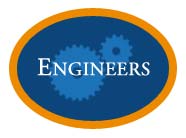
GENERAL MOTORS
Most of us are excited about the opportunities self-driving cars can bring. We could learn an instrument on the way to work. On a road trip we could sleep on the way there and wake up in our destination. Elon Musk recently announced plans for robotaxis – a fleet of fully autonomous taxis.
Public transportation has been around since the early 1820s in various forms. It has been the main form of transportation for people who cannot afford their own mode of transportation or for people who cannot drive due to disability. It seems that self-driving cars will change public transportation, but can we make that change be for the better?
Public Transportation, Self-driving Cars, and the Environment
There are debates on how green public transportation really is. Some say that thanks to low ridership, buses cannot compete with new cars with better fuel economy. Light-rail might seem like a good idea. Unfortunately, in order to solve the “last mile” issue, most communities up the number of bus routes feeding into a light-rail stop. This increase in bus routes does not see an increase in riders. Most light-rail users drive to the stop. We then see more buses with fewer riders. When we add in the cost in energy to build the rail system, it would be more efficient to not build the rail system at all.
Robotaxis would operate much like Uber or Lyft, minus the driver, and reduce the total number of vehicles owned. They would be flexible and convenient for the rider – something public transportation has always struggled to be.
Self-driving cars could be more efficient and environmentally friendly than our public transportation system. Most of the companies exploring this option, including Tesla, are using electric vehicles. Renewable sources for electricity, like solar, are being improved all the time. This could make electric robotaxis the most energy efficient mode of transportation.
Reducing Congestion
Where we could see a negative impact from self-driving cars is the congestion on roads. Cars take up significantly more space on the roads than buses or trains. The areas that see the most use of public transportation is in highly congested, urban areas like San Francisco or New York.
Even with fewer people owning cars, we could still see a major increase in cars on the road. The convenience of autonomous cars could cause more unnecessary trips. Fully autonomous cars could transport people who are unable to drive yet. You could send each of your three children to their afterschool activities in their own car. Convenient, yet crowded.
How Can Public Transportation Compete?
City planners and leaders are starting to talk about how fully autonomous cars can fit in with public transportation instead of eliminating public transportation. Most estimates place fully autonomous cars 30 or more years away, but city planner’s actions now will impact how autonomous cars and public transportation fits together in the future.
An article published in 2018 in the Journal of Public Transportation looked at how to make public transportation attractive to travelers even in a world with full autonomous cars. The study concluded that potential boundary limits to self-driving cars, the need for space efficiencies in highly urban areas, and the initial high cost of self-driving cars means public transportation will continue to be a major player in transportation.
The paper suggested merging self-driving cars with rail and bus systems using a self-driving car feeder system instead of buses to connect riders from their house to light-rail stations. This would reduce the feeder buses that hardly have any riders. Ultimately, public transportation will need to be made more convenient and easily accessible to compete with self-driving cars.






 We're more than just brokers. We're A/E specialists, delivering the right coverage and exceptional value and service to hundreds of design firms of all sizes. Of course we leverage the latest industry resources to provide you with coverage, risk management and contract review tailored to your practice. But we also remember the difference between simply billing clients and actually serving them. See for yourself. Contact us of a competitive quote on your professional liability insurance.
We're more than just brokers. We're A/E specialists, delivering the right coverage and exceptional value and service to hundreds of design firms of all sizes. Of course we leverage the latest industry resources to provide you with coverage, risk management and contract review tailored to your practice. But we also remember the difference between simply billing clients and actually serving them. See for yourself. Contact us of a competitive quote on your professional liability insurance.